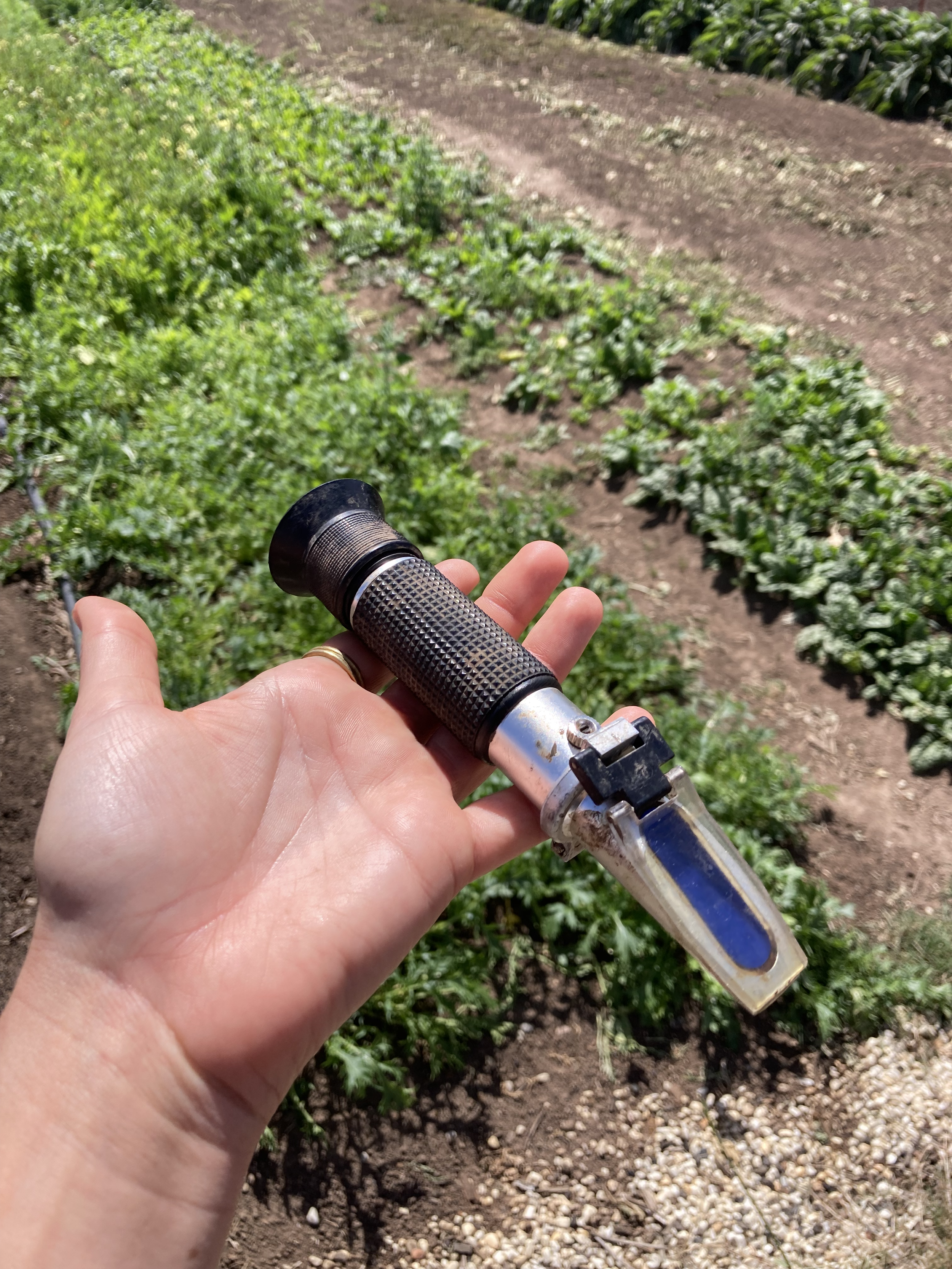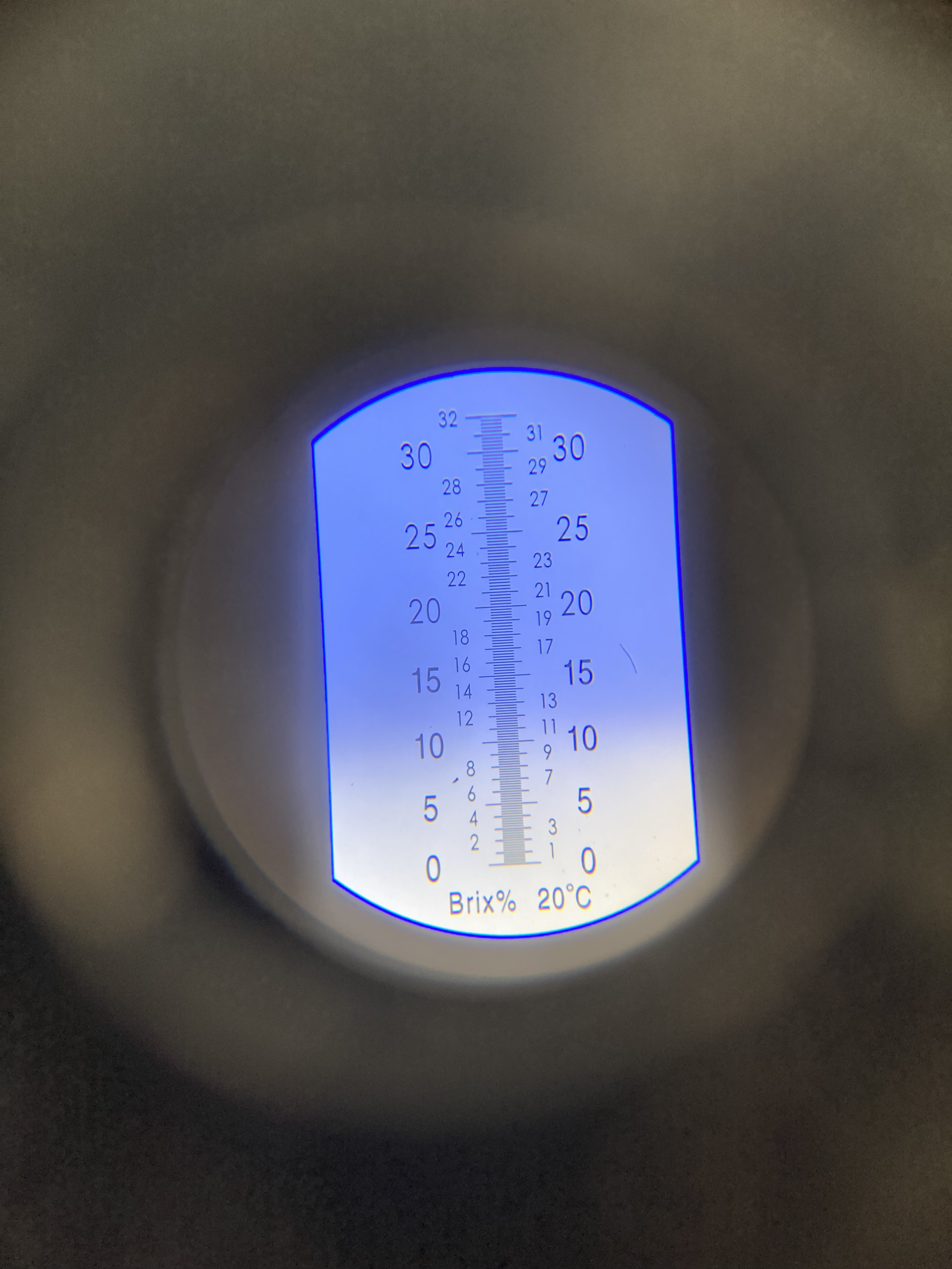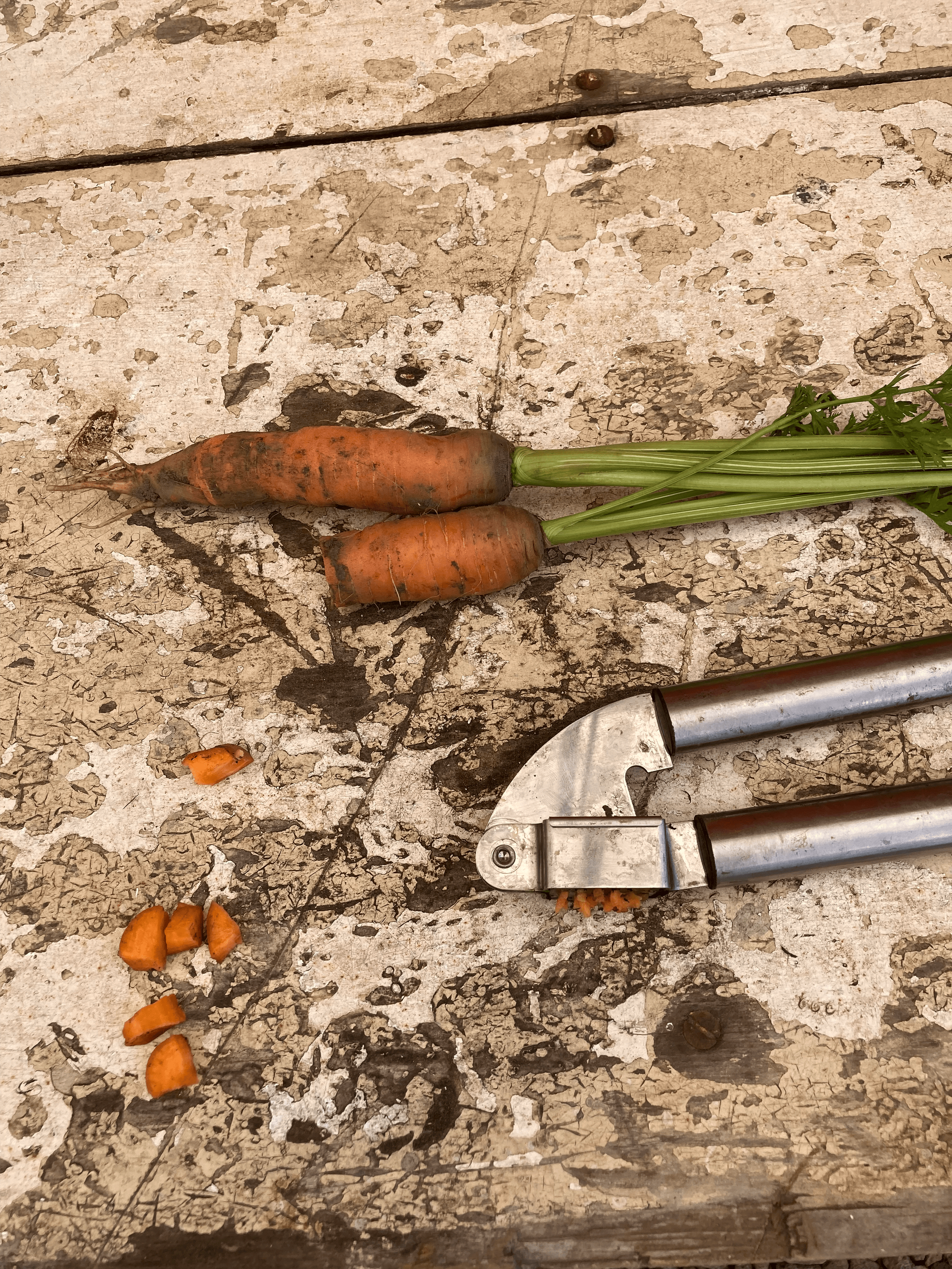Food Nutrient Density and Soil Quality with Tony from Resilience Farming
A few weeks back I stumbled into a conversation with Tony from Resilience Farming when he stopped by to deliver his fantastic compost to the farm. By chance we got speaking about the impacts of soil health on produce quality and recognised a mutual intrigue to understand the nutrient density of the veggies coming out of the ground at Common Ground Project Farm. Tony and his colleague Nathan, kindly show us how nutrient density can be measured using a refractometer tool. This measurement gave us an idea of how our bio dynamically grown produce stacks up against commercially grown food. This was a fantastic exercise and by no surprise, produce coming off CGP farm proved to be 20 - 40% higher in measurable brix readings when compared to baseline measures of commercially grown food. As a soil and composting curator, Tony works closely with all kinds of farmers and landscapes and shares with us what he hopes to see in the future of food producing.
What you do at Resilience Farming?
We’re a small family owned company that offers advice around soil health and regenerative farming. We work predominantly with vineyards but also all types of farms in the Geelong and Macedon Ranges areas. The cornerstone of our offering is compost which we make in bulk on farms on the Surf Coast.
What led you to work in Regenerative Agriculture?
I’ve always been interested in agriculture and food quality but I was involved in growing and marketing ornamental plants for export in Tunisia. At the time I noted that the conventional growing of plants with the suite of chemicals that get applied led to unhealthy plants without much resilience. This picqued my interest. After returning to Australia I was involved in another industry but watched Camperdown Compost from a distance with all the good work they were doing with compost and soil biology. My interest reached a point where I decided to go and meet them for a general chat and this led to setting up composting in the Geelong region under their umbrella. Over time the business wound down and I started up Resilience Farming.
What are your philosophies around food, soil and farming?
Well I really do like the principles of Regenerative Farming which on my list are:
· Minimise soil disturbance
· Minimise the use of chemical inputs
· Maximum biodiversity
· Keep the soil covered with living plants or organic matter
· Integrate animals
However, I like even better the simple distillation of all that we do too..
“Do more of the things that encourage soil biology and less of the things that decimate them and the graphs will go up.”
This simple phrase seems to resonate with farmers who can be intimidated by the whole language of Regen Ag and soil biology. Protozoa, Mychorrizal Fungi for example can be a bit off putting. Most farmers in their hearts can understand what practice is good or bad for soil biology.
What challenges do you see the industry facing?
Umm there’s so many; climate change, rising costs etc etc but a massive challenge is that farmers who grow our food often can’t make a reasonable living. I think I’m like most people and eat food three times a day… ok… let’s call it five plus times a day.. It is so important yet the food farmers seem to be almost at the bottom of the food chain (pardon the pun). It irks me that entertainers get overpaid and farmers underpaid. I hope this imbalance rectifies to some degree in my lifetime. Further to this…
“food should be valued on its nutrient density. Low nutrient value food is in plentiful supply in our modern food system. If there was a premium based on food nutrient density I’m sure our growing systems would also improve which would also line up with an improvement in soil health.”
How does regenerative farming and soil quality improve food nutrient density?
A simple way to measure nutrient density in food and nutrient density in say a pasture is using a refractometer. This simple device measures the dissolved solids in a liquid. In this case the liquid is the sap squeezed out of a leaf/food/pasture grass. We use this method regularly to help assess the quality and nutrient density of pastures. The dissolved solids in a sap are predominantly sugars but also other compounds such as organic acids, enzymes and other nutrients. There is a correlation between the dissolved sugars and nutrient density and consequently we can get a measurement of nutrient density. This method isn’t 100% accurate compared to a lab analysis but it is close enough and easy to do multiple tests to collect a lot of data.
We have seen massive differences in pastures on farms that farm conventionally compared to farms that farm more regeneratively or biologically. A typical brix reading would be 3 versus 12. It’s clear that the higher nutrient pastures come from healthier soil, which leads to healthier animals and in turn healthier, nutrient dense end product.
And lastly, why is it important to value the nutrient density of food?
Every biochemical reaction in our body relies on the availability of nutrients in our system that predominantly comes from food. Our bodies will function better, starve off disease and degradation and mental health will be better with available nutrients. There’s a good quote I’ve heard
’eat better but less’
and the reality is if we eat nutrient dense food we need less of it compared to less nutrient dense food to do the same job. Poorly grown food generally results in low nutrient dense food. There’s research that found that the food we eat today is 50% less nutrient dense than our grandparents. What a sad phrase.
A big thanks to Tony for taking the time to chat and share his wealth of soil knowledge. For all of your soil needs and queries check out Resilience Farming via the link below.



